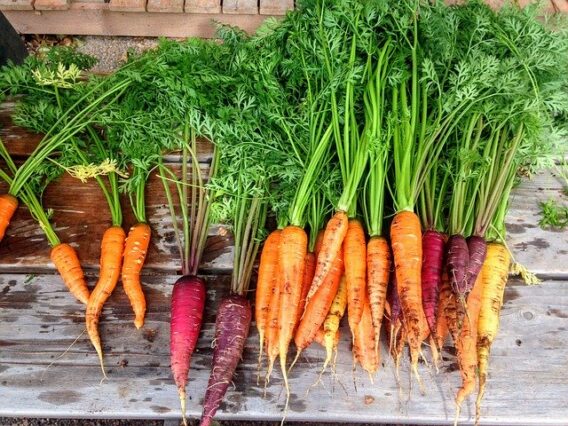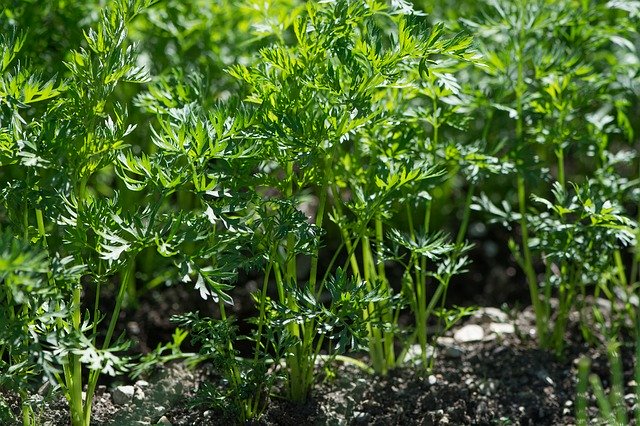Carrots are easy to grow, either in containers or in the veggie patch. They have a variety of culinary uses, and probably one of the most consumed vegetables in the UK.

In supermarkets, all the carrots are straight and orange. This orange colour is the result of selective breeding. Originally, carrots were colours ranging from purple to white and yellow! Why not add some variety and interest to a dish by choosing to grow some heritage carrot seeds?
Sowing Carrot Seeds
Sow carrot seeds into garden soil from February to July, depending on whether they are an ‘early’ or ‘main crop’ variety.
They like a light, fertile soil, and a sunny position is preferable. If you have a very stony soil, it might be better to grow carrots in containers, as too many stones will produce lots of forked and misshapen carrots. The taste will be the same though, and while we don’t mind wonky veg, soil that is full of stones can be hard work.
If sowing in soil, prepare it first by digging in some good garden compost and raking to a fine tilth, or texture.
Make a trench in the soil that is approximately half an inch deep. A garden cane pressed into the soil works well, and keeps the trench straight. Each row of carrots should be approximately eight inches apart.
Sow the carrots seeds thinly, as too many seeds will need a lot of thinning out. Cover carefully and water with a fine rose watering can or hose.
Try some great carrot varieties and heritage carrots seeds here!
Thinning Carrots
As the carrot seedlings grow, they will need room to mature properly. Thin out seedlings so there is approximately 2cm between each one. As these grow, thin them further and make use out of the one’s you have picked!
Thin carrots in the evening, as it is less likely to attract carrot fly.

Growing Carrots in Containers
Carrots grow well in containers as they like light soil. Make sure the containers are at least eight inches deep to accommodate the root.
Sow thinly, as you would in garden soil.
Container grown carrots will need a bit more watering, as containers can dry out. Water when the soil loses its moistness.
Caring for Carrots
Carrots do not need lots of water, so water only when the soil is dry, or in dry weather.
Keep the soil around the carrots weed free.
Watch out for carrot fly. This is a small, black insect whose larvae burrow into the growing carrot root, leaving holes in it. The good thing is that these flies do not usually fly higher than approximately a foot, so to prevent carrot fly from damaging your crops, you can put up a 2 foot barrier, such as polythene. You can also buy horticultural fleece to cover your carrots.
Aphids can also be a problem. Remove clusters by hand and spray with a natural insect repellent, such as mild, soapy water.
Harvesting Carrots
Carrots will be ready to harvest approximately 12-16 weeks after sowing. Pick them when they are at a size that is worthwhile eating.
Carrots can be stored in a cool place for weeks, and they are also good to freeze.



